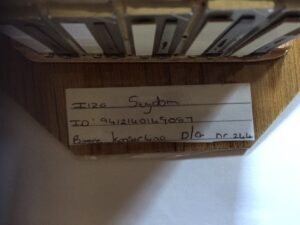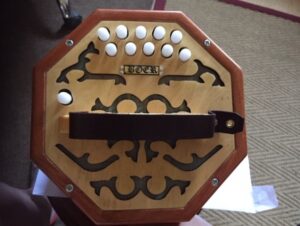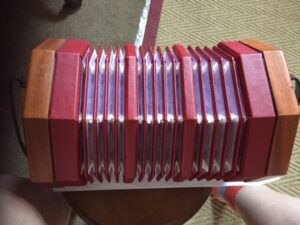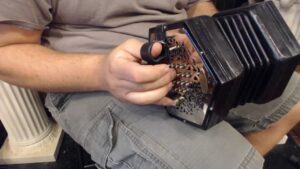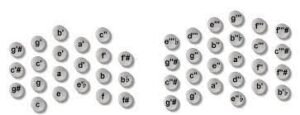Two row, 3 ¾, four row, five row and 6 row. “Boerekonsertina”, Wheatstone, Anglo-German and Havil (Hannes Viljoen concertina). You may have heard of these familiar names from musicians who play the concertina instrument in your home country or locally in South Africa known as “Boeremusikante” and some names of this instrument might be unfamiliar to you. Join me on a journey around the insightful and informative world of the concertina instrument.
Concertinas are classified as a free reed instrument or free airflow (to be more plainly). Under the class of Free Reed instruments: you will find other instruments such as the accordion, bandoneon and harmonica along with other types of instruments that might be less well known to you. When you press the buttons on the concertina and apply a “draw or push’ action you will notice that air free flows via suction or pressed movement at the side panels of the concertina as you make use of it.
The concertina is a unique and interesting instrument and can be used in a variety of music genres. Its idea derives from the mouth harmonica due to musicians who either are affected by age or illness that they cannot draw in enough air to blow into the mouth-harmonica’s flutes so they designed the concertina that works with your hands. As your hands do the draw and push action to let wind free flow in or out to produce the sound of the buttons pressed. Each button from left to right produces a different sound when you draw or push the concertina. Just like we have 12 keys in music you get your different keys that you play with a concertina, a two row concertina only has for example 2 keys (G/C A/D C/F D/G Eb/Bb) that you can play on. It is recommended for beginners who want to explore this instrument. The bigger rows such as the 3 ¾, 5 and 6 row have more notes that produce all the keys you will find on a piano, namely 36 black keys and 52 white keys.
A. Concertina Categories:
- Boerekonsertina [Anglo Chromatic with double reeds]
- English/ Anglo- German concertinas (2-row, 3-row, 3 ½-row, 3 ¾-row) [Anglo Chromatic]
- 4-row [English]
- 5-row [Crane duet]
- 6-row [McCann duet]

